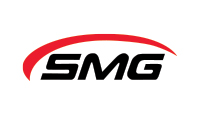January 26, 2015
Pretreatment Program – Definition And Need For Pretreatment
POSTED BY
Shri Vani SripadaTAGGED
SHARE
Starting this year, I will be blogging on Pretreatment Program and different aspects involved in it; I hope these blogs will help you.
First, I’ll explain what Pretreatment means and why we need Pretreatment.
Pretreatment is a process used in reducing or eliminating the contaminants in non-domestic (industrial) wastewater before discharging into Publicly Owned Treatment Works (POTWs). POTWs collect wastewater from homes, commercial buildings and industrial facilities and transport it via a series of pipes, known as a collection system and finally to the treatment plant. The treatment plant then removes harmful organisms and other contaminants from the sewage so that wastewater can be discharged safely into a receiving stream.
Generally POTWs are designed to treat domestic sewage only. Consequently discharges from both industrial and commercial sources can cause problems at POTWs and can have harmful effects on the water quality of the receiving waterbody. The undesirable effects can be prevented by using the treatment or techniques or management practices to reduce or eliminate the discharge of the contaminants. Hence the act of treating wastewater before discharge to a POTW is commonly referred to as Pretreatment. The National Pretreatment Program, published in 40 CFR Part 403 provides the regulatory basis to require non-domestic discharges to comply with the pretreatment standards to ensure that the goal of Clean Water Act (CWA) is attained.
Next month, I will explain more on regulation and standards. If you’d like to automatically receive the next post or if you have any questions, please contact me at the email address above.
